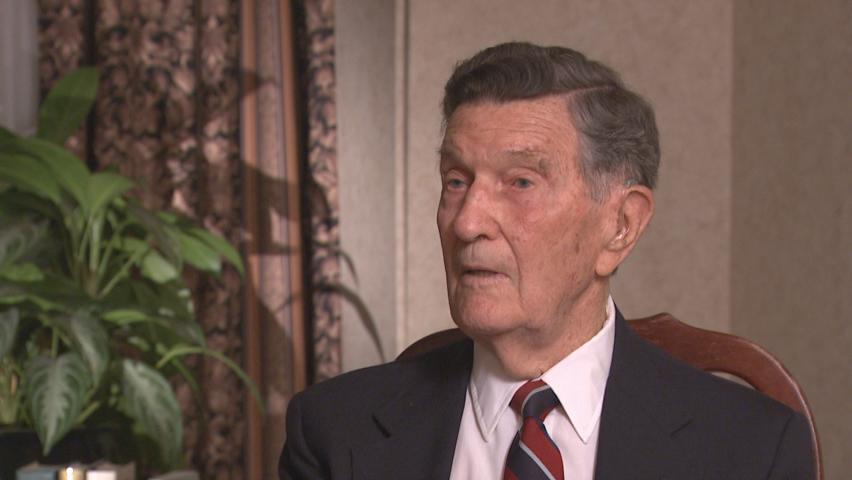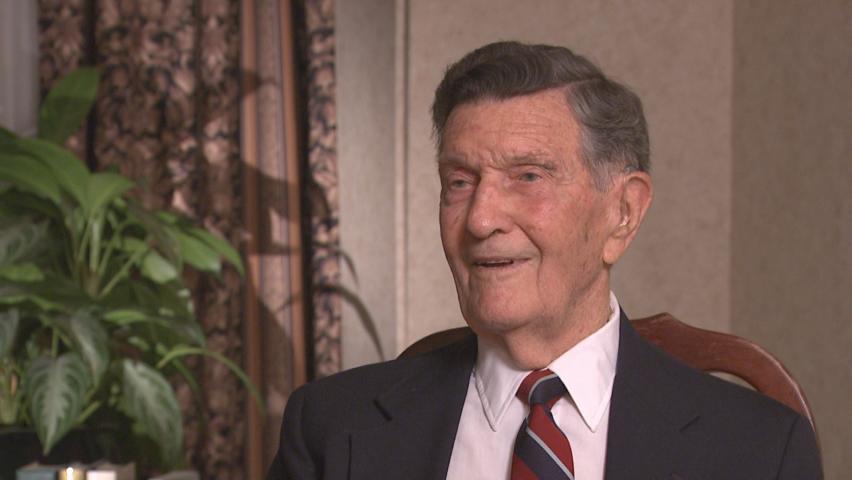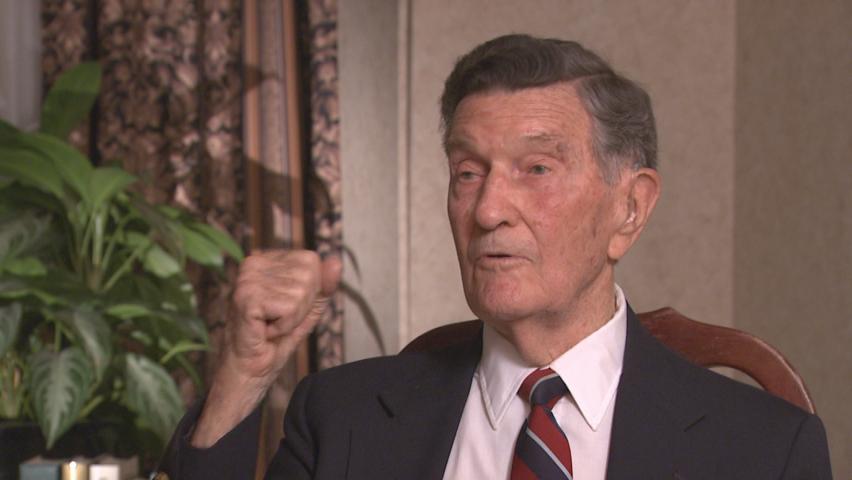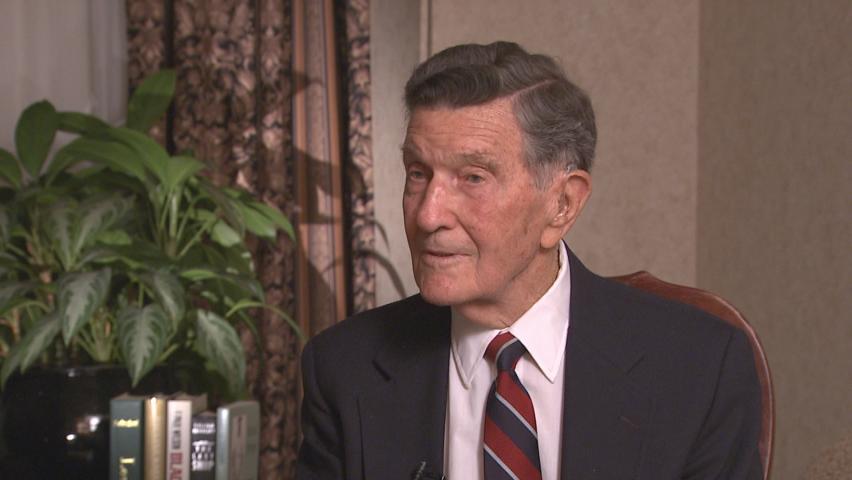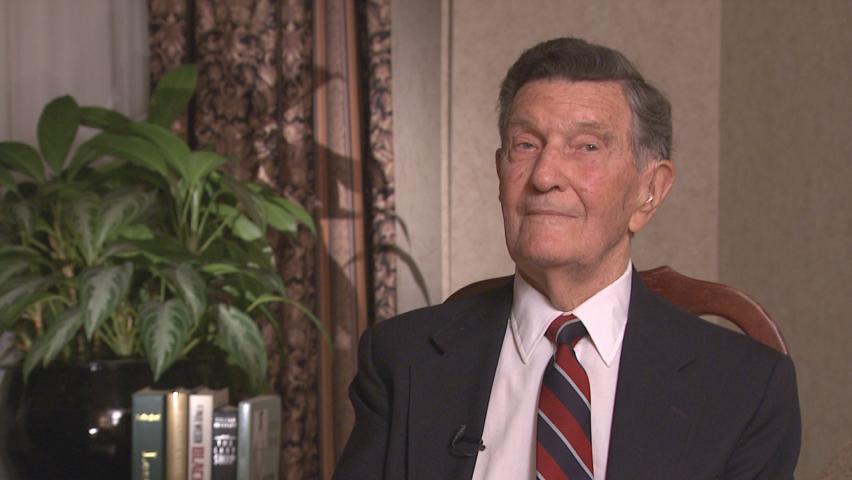Experiencing A Suicide Raid (Part 1 of 2)
Heroes Remember
Experiencing A Suicide Raid (Part 1 of 2)
Before I finished my first tour,
we had transferred onto Halifaxes
which are four-engine aircraft and
one of our most outstanding raids at
that point was when we went on
what was really considered to be a
suicide raid which was a night
moonlight attack up in Trojjen Fiord in
Norway where we had a low
level attack on the Tirpitz.
We had to go in at mass height
at night as they say, in moonlight and
drop monstrous big mines
under the tail of the ship.
We had to go to Scotland to a
forward base in order to be able to
reach Trogan and back with a load.
When we went up there we waited
for the moonlight and for clear weather.
We went on the attack.
It was a wonderful experience
up to that point flying down the fiord at
Norway and this was wintertime,
it just looked like a, it was more like
flying in an ice castle kind of thing,
down the mountains on either side and
water down the fjord and then we
went into the smaller fiord,
the open fiord where on the cliff wall the
Tirpitz was moored inside on the edge
of the thing while they worked on it and
we had to come down as I say at 150 feet,
drop these and come up.
Everything was fine until we came
into the small fiord, they had been
alerted as to our coming and
the fiord was full of white smoke.
And we were flying, at this point we had
to with the dive pick up 250 knot speed,
150 foot height in this smoke atmosphere.
We were blind and it was like flying in snow,
I mean it was just hopeless but
the thing was you had to try and
we had to try and time it from where we
entered and drop our weapons and
then you had to pull up to miss
the cliffs at the end and
then come back out.
I don’t know whether we lost anybody
on that particular one but by the time
we got back at base at Lossiemouth in
Scotland our air officer commanding
was there personally to debrief us and
after we were debriefed about this
smoke and blind approach everybody was
having a cup of coffee
with a little bit of rum in it relieved
by the fact that it was over when the
AOC climbed up on the table and said,
“Gentleman, Quiet!” he said,
“I have something to say,
He said, "I am sorry to tell you,
we can’t be certain that the Tirpitz has
been damaged or put out of action,
so go to bed, we’re off tonight!”
Related Videos
- Date modified:







